|
If you have not yet made the beautiful drive to the El Rito Public Library, you should. This is the prettiest library I’ve ever seen, inside and out and is surrounded by lush trees and open, grassy fields. The building is a humble adobe that has been added onto through the years, starting in 1930 as a one room middle school then morphing into a library in 1989. Many kind and generous folks have and continue to help create this community space that has so many interesting layers that I am not even scratching the surface of this little gem. I drive the peaceful, mellow road, up 554 to 215 almost any time that I get word of something special going on there. My wife and I have gotten all dolled up to give out candy to the local kids on Halloween, joining the awesome lowriders that show up for the annual “trunk or treat'' in the gravel parking lot. For one of the Friday night movie and potluck events, we cooked up a big batch of pesto filled ravioli in a cream sauce to contribute to the other delicious food people brought, and they even had popcorn! Sometimes I go just to peruse the various, meandering rooms furnished with comfortable chairs and workstations with computers. And, if you ask nicely and have 10 cents, you can use the printers too. In one room, the walls are barely visible through the gorgeous, hand tailored quilts created by the El Rito Quilting Guild. These ladies can sew! The designs and colors are so beautiful and comforting, it can hypnotize you into staying for hours without even noticing time passing. The books are tidily organized and easy to navigate. There are DVD’s and audio books galore. There are so many wonderful activities and events going on here. We look forward to donating something tempting to this year's annual silent auction to do our part in supporting this magical asset that heightens so many lives, young and old. Seeing as you are already in El Rito, try to carve out time to dine at El Farolito. This is a tiny, charmingly ramshackle adobe building nestled in the heart of the other ramshackle buildings that create the business part of El Rito. The cafe opened somewhere around the 1960’s, (it’s a hard fact to find), and was infused with new energy in 1975, when the original owner was joined by her brother and his wife, Dennis and Carmen Trujillo. They added a green chile sauce that has won awards and gotten the attention of many huge foodie magazines and individuals.
When we visited last, Marisol, Dennis and Carmen’s daughter seemed to be running the place along with a very outgoing and pleasant man literally running from the kitchen to the dining room and back, delivering food, to try to keep up with the busy hum of hungry patrons. Walking into the cafe takes a moment to absorb the uncommon vibe. It’s small, I mean small. You will find four mismatched, somewhat communal tables, surrounded by empty cardboard boxes and full cardboard boxes, overflowing with all the prepared or cooked or unseasoned goods that are needed to create the items on the menu. While waiting for our food, a trio of women placed their order at the counter and held up 2 lemons to be added to the bill that she’d helped herself to from one of the glass, stand up refrigerators crammed against the wall. I commented to my wife that Marisol handled that very well, assuming that the lemons weren’t for sale, but that she politely sold them anyway. Wrong! After a bit, when my eyes and brain were able to sift through the unusual clutter surrounding us, I focused on an old white board, with a listing of the refrigerators contents for sale. Aha, those lemons were for sale, as well as avocados, milk, eggs, soda, etc. I’m going to guess that almost any ingredient needed to cook with, is or could be bought from the cold case. Earlier, I held the door open for a woman whose arms were full of her takeout order and noticed a 32 oz container of chili powder tucked under her arm. I now understand that she had just bought it from them. As a former restaurant owner, I admire their generosity in allowing this kind service to the public as it gets pretty hard to plan for supplying a consistent menu when you’re not sure what ingredients you’ll have left at the end of the day. I think the family is still operating under the rules demanded by COVID, as all the cutlery and serving vessels are styrofoam and plastic and the menu is a folded 8x11 piece of paper. Looking back at photos taken by previous patrons and reviewers, I see metal forks, ceramic plates and laminated menus. In light of the health of our planet, I wish they would bring them back, though it’s nearly impossible to imagine fitting a dish washing station into the building. Now, for the food. After confirming that the tortilla chips were house made and the guac too, we ordered them to start. They were delicious. Still slightly warm, perfectly crisp and salty, but not at all oily. The guac was uniquely creamy and had a pleasant hint of garlic leaving us wishing we had more of it. We ordered the Farolito Combo plate, which consisted of a chili relleno, a chicken filled enchilada and a ground beef stuffed hard shell taco. The relleno was very good. A perfectly mildly spiced poblano filled with a flavorful white cheese, smothered in green chile and topped with shredded cheese. The chicken enchilada was a little dry, but flavorful as well. The taco was a generous portion of house seasoned ground beef a little heavy on the cumin and salt. The nicely flavored and plump pintos were yummy. We also ordered the tostada, opting for chicken. The large crunchy blue corn tortilla topped with a lot of shredded chicken, iceberg lettuce, a little pico and some grated cheddar made this a crisp tasty snack that I would definitely order again. Because we tend to stuff our faces on these ventures, and the fact that my wife’s love language is, well, food, almost any food, we also ordered a side of onion rings. Sadly, they were not fantastic, likely just delivered from the food supplier and straight from a frozen bag into hot oil. I’d skip the rings and go for the crinkle cut fries that wafted by our table to almost every person dining in. Don’t mistake this place as having only (New) Mexican fare, there are many other items on the menu that we hope to sample on another day including burgers, quesadillas, steak picado, grilled cheese and cold sandwiches too. Oh right! Again, because of the face stuffing/love language mentioned above, we also ordered a slice of the homemade apple pie, a la mode. Jeez, we can eat! It was very good but could have been much better if it were toasted or warmed in an oven instead of a microwave. Next time, I’ll ask for it at room temp. The flavors were a sweet heaven and, I think, not nuked, the crust would have rivaled my wife’s. There are no alcoholic beverages but a bevy of fun fizzy drinks and coffee are aplenty. The prices here are pre-pandemic and the entire meal with plenty of leftovers was just over $40 with tip and tax. All in all, I think it’s worth “checking out.”
10 Comments
Reies Lopez Tijerina – even today opinions are divided. Was he a communist agitator or a selfless proponent of the poor and underprivileged? Let’s start at the beginning and explore.
Tierra Amarilla, just a few miles north of Abiquiú on Hwy 84, is a sleepy little town. It almost looks like a ghost town with a number of closed business buildings and abandoned houses. It is somewhat surprising that it has been the Rio Arriba county seat since 1880 when the town got its current name (“Yellow Earth”; before that, it was called “Las Nutrias”). When the Denver and Rio Grande Western Railroad constructed lines that connected Chama to their vast network, the area around T.A. must have experienced a cultural and economic expansion that just as quickly ended when the railroads stopped running.
The current courthouse was built in 1917. I have visited it a few times; once because I was called for jury duty, another time to attend a meeting of the County Commissioners; always totally uneventful trips. I was therefore utterly perplexed when I learned that there had been a raid on the courthouse in 1967, the National Guard was called in, and one person got shot!
About 20 members of a group which was founded in 1963 by Reies Tijerina and which called itself La Alianza Federal de Mercedes (Federal Alliance of Land Grants) assembled at the courthouse on June 5, 1967, in order to place the district attorney Alfonso G. Sanchez under citizen’s arrest. They also wanted to free a few members of the group who had been arrested a day or two earlier. The Alianza had planned a meeting in Coyote, and Sanchez used police force to break up the gathering, and several members were taken into custody. However, the county judge had already freed the imprisoned people, and Sanchez wasn’t in T.A. at all but in Santa Fe mobilizing police forces. When they couldn’t find Sanchez, the Alianza group took a sheriff and a reporter hostage; they also shot and wounded a prison guard and a police officer. The event caused national attention; Governor David Cargo called in the National Guard which descended with tanks and helicopters, state police, and local sheriffs for what probably was the biggest manhunt in New Mexico history. The Alianza members and their leader, Reies Tijerina, fled to the near-by mountains where sympathetic ranchers protected them. Only after Tijerina’s wife (who was pregnant) had been arrested, did they surrender to authorities in Albuquerque.

Photograph of Reies Tijerina around the time of the ""Courthouse Raid"" incident in Tierra Amarilla, NM, in June of 1967. Tijerina was a leader in the fight to restore New Mexican land grants to the descendants of their Mexican American and Spanish owners. Photo by Peter Nabokov, used with permission.
By now, you’re probably curious what this was all about: WHAT did the Alianza want to accomplish? WHY was the district attorney so set to arrest its members?
The name of the group gives a clue: it was all about land grants. An issue that even today can cause heated debates. It goes back to the time when the land here was a colony of Spain. The governors who were accountable to the King of Spain granted the land to people here. A person would petition with the governor or his representative; when the petition was granted, the person would receive a document which would guarantee that the person could occupy and use the land. Actually, that was a condition: the person HAD to occupy and use the land. Something like developers was not allowed. Communities could apply for land grants as well, in order to establish settlements. When Mexico gained independence from Spain, they continued with the customary land grant system. An essential part of this system was the fact that the people didn’t really OWN the land – it was theirs to use and to live on, but if somebody would find gold or some other valuable substance, this would belong to the King. (I learned this from a video produced by New Mexico State Historian Rob Martínez; if you want to learn more, here is the link).
Things changed when New Mexico became part of the United States at the end of the Mexican-American War in 1848. Although the Treaty of Guadalupe Hidalgo confirmed the legitimacy of land grants under Mexican law, in practice many people lost their rights. Americans had a different understanding of land ownership, and communally held ownership was a foreign concept – Ejidos (Community-owned land) were not recognized under U.S. law and fell into private hands. Much of it became National Forest or was assigned to the Bureau of Land Management. People didn’t have their original copies any more, and lost their land. They were not prepared to deal with a complicated legal system and especially with unscrupulous speculators. The Santa Fe Ring, a powerful group of corrupt lawyers, businessmen, and politicians, swindled land grant holders into selling their land. One of them, Thomas B. Catron who became a U.S. Senator, managed to acquire 3,000,000 acres of land. Compared to these individuals who often hired assassins to eliminate their opponents, Reies Tijerina looks almost like a choir boy.
Well, not really. Reies Tijeria was no angel, he wasn’t perfect. Born in 1926 in Fall City, Texas, he experienced from a young age the discriminating treatment of poor, migrant families with Hispanic/Mexican origin. After he became an ordained pentecostal minister, he founded a little community of some 20 families in the southern Arizona desert, The Valley of Peace, in 1955. He moved with his family and a few of his followers to New Mexico in 1957. That’s where he learned about the land grants and the injustice he perceived when he learned about the many families who had been dispossessed of their lands. This became his new passion: to bring justice to people who had lost their land, and to highlight the unequal working conditions that so many Native Americans and Hispanios had to endure. This led to conflicts with lawmakers and the police who branded him as a communist agitator, and eventually to the Tierra Amarilla Courthouse raid. After being convicted of charges related to the raid in 1970, the federal government sent Tijerina to a prison for the mentally deranged where he was forced to take psychotropic drugs. When he was paroled two years later, he was something of a broken man. He died in 2015 in El Paso, Texas.
Here is a corrido about these events performed by Roberto Martínez and his group Los Reyes de Albuquerque who was a friend of Tijerina. It was played on all the local radio stations and was featured in the Smithsonian touring exhibition Corridos sin Fronteras / Ballads Without Borders.
A quick mention has to be made of Tijerina’s involvement in the larger Civil Rights Movement: in March 1968, he was elected to be the leader of the Chicano contingent of the Southern Christian Leadership Conference and worked with Dr. Martin Luther King to organize the Poor People’s March on Washington. After Dr. King’s assassination in April, Tijerina continued his work under the leadership of Ralph Abernathy.
When you decide whether Tijerina was a good guy or a bad guy, keep in mind that to stand up for minorities’ rights in the late Sixties meant to put one’s life in jeopardy. Justice seemed to be reserved for the privileged, and the punishment for acts of violence were hugely disproportionate, depending on who was the perpetrator. Maybe Tijerina was sort of in the middle, like most of us. 
Poor Peoples’ March – conference at Hawthorne School in Washington, D.C., June 1968. Left to right: Rev. Andrew Young, Reies Tijerina, Rev. Ralph Abernathy, Rodolpho “Corky” Gonzales, Roque Garcia. From: Tijerina and the Land Grants: Mexican Americans in Struggle for Their Heritage, by Patricia Bell Blawis. Open Source.
I wrote about the origin of cats last week, so how about dogs? Well, to me, dogs seem way more varied than cats, both in size and disposition. I’ve seen dogs that barely look like dogs anymore they’ve been bred so much. Again, there’s a discussion in there I’m not willing to touch, at least not today.
We have 3 dogs. I love having dogs and wouldn’t want to live without them. They are all mutts, and strays. They all 3 showed up and adopted us, on different occasions of course. They all 3 have very different personalities, and ways to be annoying. Generally, I think of dogs coming from wolves, originally. Healers were bred from the Australian Dingo, BTW. Just a fun fact. The New York Times had an article describing domesticated dog fossils found in Europe from over 15,000 years ago. There is also speculation that dogs were getting domesticated at roughly the same time, in Asia, and in Europe and the Middle East. There may be DNA evidence supporting that theory. For fairly obvious reasons, at least if you have a dog or are a dog fan, they can be quite useful. They can be trained quite readily, some say, I wouldn’t know, and they can then be helpful in hunting, fighting, and protection. That all makes sense for early mankind. I think they make a fairly good friend and companion, if not a bit needy sometimes. It is speculated that all dogs descend from the Gray Wolf, though likely from two time periods. It is also suggested that it would take 130,000 years for the wolf to be bred into the modern dog, which implies that wolves were cohabitating or at least inter mingling with humans well before they were being directly selectively bred. The genetics of dogs is far less mixed up than you might imagine though. Particularly with Pure Bred species. A great article to look at, if you are interested, is from the PBS, which you can find by clicking here. We finally began to build our long desired screened-in gazebo on the riverbank. We started this project on Wednesday, planning completion on Saturday. Everything was going smoothly and as scheduled. We called ahead to reserve an orbital floor sander for early Friday morning, planning on finishing laying the deck boards and getting the sanding done all in one day.
Being the early bird in our family, my wife set an alarm for 5:30AM, hopped out of bed and gently whispered to ask me if I wouldn’t mind letting the goats out in a bit, as it was still dark and too early to release the beasts safely. I mumbled a grudging “yes” and squeezed in another hour of sleep. When I climbed the ladder down to the living room I was surprised to find her sitting by a roaring fire ablaze in our woodstove. I asked “Why are you still here?” to which she replied, “Look outside.” Holy moly, it was snowing! Real snow! Fat sticking flakes in a dark intimidating sky. Yikes, what’s happening here!? It's almost May and I’m sunburned from yesterday's framework! Realizing it was time for plan B, we called to cancel the rental and decided to go out to eat instead, maybe even catch a movie. We've been wanting to try breakfast at the Artesian Restaurant at Ojo Caliente hot springs. After a quick check online to make sure it was open, we hopped in the car and off we went. We were so entranced with all of the new snow on the Sangre de Cristos that we missed the turn onto Highway 285 by several miles. Oops! We decided to keep going into Espanola to try breakfast, instead, at La Fonda Del Sol at the Delta Inn. This is a fairly new restaurant boasting a no borders approach to Mexican cuisine. We parked in the large, dirt lot and could have used an old school map to find the entrance. Once inside, we found warm, Spanish colonial decor with a soft Saltillo floor and lots of rich, brown wood accents on the walls and above. Tall ceilings and two huge indoor trees make this a special place to dine. There’s a small table piled with fun tchotchkes from Mexico that are also for sale. Our server, Karina, ended up being the sister of Juan, who owns the place and opened only three years ago. Juan boasts being the bringer of quesabirrias to the area, a very unique and delicious dish consisting of a corn tortilla soaked in red chile sauce overnight, then filled with broth cooked beef birria, and grilled to a soft, but crispy perfection. We ordered two of these to start and were not disappointed. They were served with a small cup of consome, aka broth, and two medium spiced, creamy salsas. The habanero green was the most complimentary to this build of beefy cheesy perfection. Intrigued by the Chiles en Nogada and with Karina’s urging, we went out on a limb and ordered that as well. Now, these were a surprise. I still don’t know if I loved it, or if I will never order it again, unless maybe it’s Christmas, and I happen to find myself here on December 25. It was a chile relleno, one of my favorite foods on the planet, but was almost unrecognizable as one. The menu calls it a Pre Hispanic recipe. It’s a large, perfectly tender but al dente Poblano chile stuffed with ground beef slow cooked in apples and smothered in a pecan cream cheese sauce and topped with pomegranate seeds and fresh parsley. It was served with nicely seasoned perfectly tender Spanish rice, a small Mexican style green salad and corn tortillas. I was trepidatious as I took my first bite. My taste buds were overwhelmed by the tart popping pomegranate kernels, smoothly accompanied by the savory cream sauce. The apple soaked beef and the slightly spicy chile were a strange combination at first, but once my brain caught up to my mouth, we made peace with this odd combo and ended up liking it quite a bit! Upon Karina’s suggestion, we also ordered two gorditas of her choosing and a tripe taco, street style. The gorditas come with your choice (in this case, Karina’s choice) of flour, yellow corn or blue corn. The blue corn gordita was stuffed with rajas con queso, an ample serving of green chile strips and a bland, white cheese, which could have been elevated with an over-easy egg on it, and maybe a side of crispy bacon. The flour gordita was filled with asada de rancho, a grilled beef steak in a mild red sauce. Yummy! The street taco with tripitas (deep fried intestine) and onions and cilantro was simple but amazing. It had a fried calamari taste and feel. Crunchy, a little slimy, but flavorful. This was some good, authentic fare from the middle of Mexico, mainly influenced by the cuisines of Jalisco and Zacatecas. We loved the quesabirrias so much that we ordered two more and slammed them right down. As you can imagine, we left quite full and for just under $68 with tax and a generous tip. The Delta is a 10 suite inn that also caters to special events. The grounds are well maintained, the rooms are very large and the buildings are beautiful. Other than the dining room that we ate in, there are two more, much larger dining rooms and a lovely outdoor courtyard available for private bookings. La Fonda de Sol caters these as well as off location events. After our self guided tour, by the time we made our way back to the car, the sun was shining, and the sky was blue. I guess we no longer had an excuse for taking the day off, but decided to do so anyway. We did go home, but, instead of finishing the deck, we simply sat by it and watched the swollen river flow smoothly by. I highly recommend taking the next snow and hot sun day off. It still counts as a snow day! By BD Bondy A while ago I wrote something about a genetically modified something or other. I don’t remember what. But it had to do with how humans have been genetically modifying their food for a long time, basically, since humans have been farming. These genetic modifications weren’t done in a lab, but through evolution, through breeding qualities that were desired. Cultivating the wheat that grew with bigger grain, or breeding cattle that made more desirable milk, or meat. Bigger, or more docile, or better color, or sweeter. Whatever it was, it was cultivated over the millennia to be more what humans wanted. Not everything, of course, but chickens, pigs, cattle; those aren’t natural, they were bred to be what they are today. Same with corn, rice, wheat. The discussion about scientifically messing around with genes in a lab is NOT in this article. Maybe some other time. I’ve got all these feral cats showing up, passing through. They live under our porch for a time. Sometimes for a long time. They most often leave after they’ve been captured and brought in to be fixed. No doubt a traumatic experience for them, if not humiliating. I’m sorry, but it needs to be done. I love the cats under our porch. They kill mice and rats. I know. I’ve seen them. We have a camera under there and I have proof. They’ve also killed birds. Also on camera. Oh yes, that’s what I wrote about before. They are the number one bird killer in the world. By far. Feral and domestic cats account for the top 2 slots of biggest bird killer world wide. Wind turbines are on the list, but not the top 10. Read about that HERE. https://www.fws.gov/library/collections/threats-birds
So, as you can guess by the title, I was wondering where cats came from. They definitely aren’t ‘natural’. Don’t get mad, I’m not disparaging them. I think cats are interesting. They are sometimes adorable, and sometimes horrible, but they are amazing. Astonishing reflexes. Super fast. I asked Google, and this is the short answer: Domesticated cats all come from wildcats called Felis silvestris lybica that originated in the Fertile Crescent in the Near East Neolithic period and in ancient Egypt in the Classical period. Interesting, but not really an explanation. The Library of Congress has quite a bit more to say on the matter HERE. Cat domestication appeared early in civilized humans, and apparently in two major periods, the latter being in Egypt. Also, it seems that a major selective breeding change happened during the medieval period pertaining to the coats of cats, apparently trying to breed them according to their coloring. Cats are supposed to have been taken all over the world via shipping vessels, likely to help with the rodent problems on board. Cats clearly became useful and desired by humans and a symbiotic relationship has kept them going strong. I loved fostering our kitten which was made under our porch. And his father, whom we also caught, was a pleasant fellow. His elusive mother, still fertile, the cleverest of the bunch, remains under the porch. Get your pet cats neutered, please, and try and keep them inside. They will live longer. Zach Hively
Fools Gold As a man with an advanced degree in English, I must say that few literary delights compare to building something tangible with my own two hands. Barring that, because in fairness I use English far more often than I use corded drills, very little compares to getting my dad to build things for me. With me! I mean WITH me. Father and son, drawing up plans, watching instructional YouTube videos, buying carloads of hardware from every home improvement store in the county then returning everything because the hardware they bought was the wrong size hardware—this is as American a pairing as playing catch in the yard. It’s even more American if one of them is playing catch by himself because the other one has a job and responsibilities and doesn’t have TIME to do this right now, Dad. But—I wanted a pergola. It would make me feel more retired, even though I’m not and (being an English major) probably never will be. So unless I can build a pergola out of a comparative analysis of magical realism in the collected works of Isabel Allende and Gabriel García Márquez, for which I would have to read a LOT more of both authors, I needed to suck it up and dedicate some of those endless working hours to helping my actually retired dad get excited about starting a new temp job, only for free. Because I sure can’t research all this lumber by myself. And boy, is there a lot to consider with lumber. Such as: why is a two-by-four actually a one-point-five-by-three-point-five, yet when they say it’s ten feet long it’s actually ten feet long? Did the definition of an inch shift since the invention of lumber, while feet stayed the same? Or is this, as I suspect, a dark conspiracy backed by Big Wood to nullify all my lumbering calculations? Ah, but I’m getting ahead of myself. You see, before we even started with the lumber, we had to set the concrete. The cardboard forms for concrete pillars, as you may know, are round; bags of concrete, on the other hand, are not. This set up Pops and me for doing some math. It being a word problem, I felt qualified to help: “If a pillar is eight inches in diameter,” Pops began, “and we need to bury them thirty inches deep…” “Are these real inches or lumber inches?” I asked helpfully. “And, how many inches equal a pound of concrete?” Like a couple of smart fellas, we budgeted the entire first day of Project Pergola for buying concrete. This disappointed me somewhat; I had visions of pizza and margaritas under the pergola before sundown. But, Pops knows best that some things, like his son, take longer to reach fruition than you bargained for. Day Two, Pops called in to his one-day-a-week volunteer gig, and I had to find a decent bookmark for the novel I was reading, so that we could dedicate ourselves to mixing concrete. You don’t want to half-ass mixing concrete—not if you ever want to use your wheelbarrow as a wheelbarrow again. But you might want to half-ass mixing concrete, if you have any desire to move your body without hurting ever again. It turns out—despite suggestive adjectives to the contrary all over those bags of concrete—that concrete requires a great deal of force to mix. Strangely enough, this might have been the moment that Pops chose to disclose to me, in a moment of male bonding, that he had scheduled surgery for his hernia. “I can handle the hose,” Pops said. “And I can poke the air bubbles out of the concrete after it’s poured. But you get to mix.” So I did. I flexed every muscle in my body mixing concrete. And when those gave out, I flexed the muscles that aren’t actually muscles, like spotting an its when an it’s is needed, just in case they might help. They didn’t. But I mixed the snot out of that concrete, until Pops said, “Let’s call that good enough; we don’t want it to set before we pour it.” He handled smoothing that concrete and setting some brackets with a master’s touch, and I made sure his dialogue included semicolons correctly. And that was the end of Day Two. I’d like to say Day Three saw a pergola. Instead, it saw Pops drive home for some much-deserved R&R and a long session of researching bolt lengths. It saw me gazing proudly, for a great many hours, at the six concrete stumps sticking out of my back yard. Someday, I will have a pergola to enjoy. But even that cannot compare to the pride I feel today. It’s like I am standing taller. Which I am, if you measure in lumber inches. With the turn of this year's never ending winter, we decided it was time to irrigate our beautiful riverfront. We’ve been spending hours each day for years dragging stupidly long hoses all over the acre we planted grass on. It is taking, and, one day, will rarely or maybe even never, need to be watered. After spending an embarrassing amount of screen time, we found a hybrid grass that will eventually have 3 foot roots that will thrive happily with our very high water table. Our hope is that if we run a 1-1/4” poly pipe from the pumphouse down to the area then split off into 6 zones and hook them all up to a good multi-zone timer, we may never have to sacrifice much of the summer fretting and toiling over our huge grass-baby again!
There was no way that we were going to dig those ditches by hand, so we called our reliable equipment rental in Espanola. Gil’s Rental has been doing business since 1971. If you are in need of a tractor, trailer, cherry picker or even a steam roller, Gil’s is the place. They are open 6 days a week, are always there to help you load up your rental and take care to keep their equipment well maintained. It’s almost always guaranteed that you will be greeted by Rocky, the rusty, lumbering Shepherd mix, usually throwing around a small trailer axle or a huge stump. About eight years ago, he showed up and wagged his way into the hearty hearts of the men working there. Now he’s their beloved yard dog and has a full time job. Back to our project. We needed a trencher! We went for the 3 foot, gas driven walk behind. Boy oh boy did we get our trench on! On our third and final day, we decided that we deserved a royal reward and took ourselves to Cafe Sierra Negra. What a treat this place is! Walking in is a festive and warm experience. The staff is very friendly, inviting and efficient. The walls are covered with local art and colorful paint. There is gentle music playing my kind of groove and the aroma is intoxicating. This place has that super laid back vibe that allows one to choose their own table, grab a menu on the way and plop down in a comfortable chair to make some serious culinary decisions . This is a well thought out menu using quality ingredients, sometimes locally sourced. The menu is pleasantly simple and doesn’t overwhelm with too many choices. There are sweet and savory crepes, several interesting and uncommon salads, tacos, quesadillas and a tempting cheese burger I will visit at another time. We asked our neighbor friends to join us so we ended up with a lot of the menu options on our table. I chose one of the specials that day, a perfectly composed au gratin dish of plump rigatoni coated with a decadent gorgonzola and nicely seasoned with fresh spinach. It was baked just right and had a browned crunchy top with a perfectly al dente undercarriage. My wife went for the stuffed poblano chile. This version’s chile was filled with savory brown rice, beans and corn and laid in a stew of green chile. In my opinion, it would benefit from a sprinkle of piquant cheese (like Cotija). One of our companions ordered the fish tacos and the other chose the quesadilla plate. The tacos were built of grilled fish on small corn tortillas and heaped with pico de gallo, avocado, a lime and honey cabbage slaw and a pineapple salsa. The quesadillas, well, three small quesadillas that more resembled tacos, were filled with beans, corn and peppers and then topped with the same slaw as the fish tacos. We all agreed that they could have used a bit more cheese to really be called quesadillas. But, the salsa/slaw combo on both of the dishes added a fresh burst of tang that was absolutely amazing. We tend to be a little piggy, so we also ordered the salad special which was a huge plate of winter greens under a generous portion of dried figs, toasted walnuts and gorgonzola with a slightly sweet vinaigrette on the side. We all dove into our food with hungry gusto and were happy with our choices. As a final reward, we were lucky enough to score the last slice of their homemade Basque style cheesecake which maybe shouldn’t be called cheesecake at all. It looks like cheesecake but melts on your tongue like a creamy flan or pudding or silk. It’s delightful and I highly recommend trying this slice of heaven. It’s good with a smooth glass of Malbec or a steaming hot fluffy latte. The portions are large and left us with plenty of leftovers to eat the next day when we finished our giant ditch irrigation job that hopefully leads to an effortless soft grassy paradise on the river. I can’t wait to go to Cafe Sierra Negra again and try that green chile cheeseburger and hopefully one (or two!?) slices of the “cheesecake.” The prices are not low, but not exorbitant considering the quality of the ingredients and portion sizes. The entire bill for 4 people, with several glasses of wine and ciders came to just under $160. Definitely a treat more than an everyday experience, but I dig it. ~Jessica Rath Got ya – you probably thought of chile. But that’s not what I mean, the topic of this article is: grapes. The grapes used for wine-making. Did you know that the first wine-making grapes in the U.S. were grown in New Mexico, not in California? And did you know that the initial reason for producing wine was the Catholic Church? When the Spanish colonists settled in the Americas, including what is now New Mexico, several Catholic religious orders built churches and established missions so they could convert the indigenous populations. Franciscan monks followed the colonists to the upper Rio Grande valleys and to Santa Fe which in 1610 became the capital of Santa Fe de Nuevo México, a province of New Spain. The monks had to celebrate a daily mass, and for the sacrament of the Holy Communion they needed wine – which had spent many months on galleys coming across from Spain, then overland to Mexico City, then from there via trade routes up to the Santa Fe province. The wine was shipped in caskets with lead tops, which was probably poisonous; or it was shipped in goatskins, and by the time it arrived it was probably vinegar. So, the monks used choke cherries for making early wine. The Spanish King had forbidden the exportation of grape vines because he was concerned that the New World would take over wine making. But some monks ignored this edict and smuggled some vines into what is now New Mexico, started to cultivate the stock, and soon produced their own wine – with a variety of grapes that is known as the Mission Grape and is still used today. I learned all this and much more when I visited Stan Bader, owner of Las Parras de Abiquiú, a five-and-a-half acres organic vineyard. “Las Parras” is Spanish for grapevines, the perfect name for this gorgeous property. I wanted to learn more about grape growing and wine making, and I couldn’t have come to a better person. Stan’s obvious love for and extensive experience with this topic make him a veritable treasure trove when it comes to anything related to grapes. Officially, he’s retired. In 1996/97 New Mexico’s department of Agriculture was trying to encourage the growing of grapes, to boost the industry, and Stan thought this might be an interesting thing to do after retirement, as it would allow him to spend a lot of time outdoors. “In 1996 we put our first grapes in and it has been a learning process ever since”, Stan told me. “I put in 200 Cabernet Franc grapes, and supposedly they’re the hardier grapes for cold weather. After one year they grew fantastic, 20-foot long vines. But when we came back next spring and started to prune, we found that they were literally dead. All the way back to the root. I went to an education conference in Albuquerque, and I was asking an old-timer what was the cause, why did this happen. He said, ‘This is the best thing that could have happened to you!’ WHAT? ‘Well’, he said, ‘you tear those out and put something in that will grow’. So that’s what we did. We took everything out, and kept six plants for 10 years, but they were never able to produce except for a couple of years. The roots never died, but the top does.” I wanted to know WHY these grapes didn’t do well, and what other varieties would be more successful? “The grapes used for Cabernet Blanc, Cabernet Sauvignon, Syrah, and other French wines just don’t do well here”, Stan explained. “Partly because of the cold, but also because of desiccation. We have no way to block the cold spring wind that comes down the Chama River, and that wind has extremely low humidity. The vines get dried out. We learned over time that if you keep their feet wet, if you keep the root zone wet over the winter, then the bud that’s produced up on the vine can survive.” “You can take a razor blade and cut across a bud – that will expose the primary, secondary, third, and sometimes even the fourth bud. You’ll see that the primary bud has died, it is brown. But the secondary isn’t. It’s green. It will take the place of the primary. BUT – it’s only half as productive as the first one. And if you lose THAT one, you’re looking at the third one, and that one is there to keep the plant alive and survive that year, but you have to wait for other years to get fruit. We’ve had situations in the 20-plus years that I’ve been growing grapes here that everything, particularly the white grapes, died. And we had to start all over again. The roots are fine, and the little vines from the ground up which are pencil-size or a little bigger, they survive. In the spring the sap is starting to come up. You’ve already done some pruning, and if you can see drops of sap at the tips where you pruned, it means it’s coming alive, the roots are sending the moisture up. But if there’s a cold snap, if it’s in the 20s for a whole night or anything longer than five hours, that’s their death. If it’s under five hours you might get them through. The old trunks are too brittle. The moisture inside is mostly water, that water crystallizes, freezes, and then it expands, but the brittle wood can’t, and it cracks. They can be 1/4-inch wide and go all the way to the ground. That kills the trunk, kills the arms, and you’ll have to take those out. The thin ones, pencil-size or a little larger, are more limber and the freezing doesn’t split them.” “A lot of the popular grapes which come from the Mediterranean area, from France, or from Germany, we can’t grow. But we can grow hybrids. Almost all my grapes are hybrids, except for Riesling: that’s a grape we can grow here. There’s a sweet version of Riesling, and there’s a dry version. They both grow here in New Mexico. Riesling is a popular wine here. While we have problems growing Cabernet Sauvignon or Merlot here in the northern parts, we can grow other grapes, and we learned to make really good wines utilizing these grapes.” I had no idea that grapes are so sensitive but, not everything works here in the valley, Stan says. Other places like Velarde for example, at the mouth of the canyon of the Rio Grande, are much better for growing; people there can grow all kinds of grapes whereas Las Parras can’t. They can grow Riesling, Gewürztraminer, grapes for German wines. “I say that I can tell people more about what NOT to do, than what to do. I learned the hard way. “ “I got into this because of my interest, as a kind of hobby. I ended up doing way more than I should have, my first 200 vines were a mistake, sort of – but other varieties, the hybrids, did well. Like Léon Millot, for example; the French used it to color lighter wines because it has a dark skin for color. They use it to color wines like Pinot Noir which doesn’t have a good dark color, but has great fruiting flavor. The addition of Léon Millot grapes gives the wine a robust color”. For Stan, growing grapes is a lot of work, but also a lot of fun. He warns though that it is very difficult to make a profit. Crop production isn’t all that robust, the vines just can’t produce like they do in California. Also, up here in northern New Mexico the grape vines native to the mediterranean regions (they’re called “vitis vinifera”, different from vinifera hybrids) don’t grow. Wineries pay a premium price for those grapes whereas for the hybrids they don’t. And Stan’s vineyard is too small to have mechanical pickers, so the grapes have to be picked by hand. Plus, they have to be pruned, fertilized, watered, weeded, and if there are any pests, one has to spray. Luckily, here in the north pest control is very minimal, except for powdery mildew which can be controlled pretty easily with a food-grade mineral oil spray. Las Parras is a certified organic, whole farm, but the wineries don’t pay anything extra for organic grapes. Most wineries don’t produce organic wines because all the grapes are mixed together. “On my five and a half acres I’m doing well if I can get close to 20 tons”, Stan is telling me. “Last year we only got about half of that. For one, we had terrific winds in the spring, the whole time when they were in bud-break state and started to flower. That strong wind inhibits pollination. Grapes don’t rely on honey bees, the blossoms are too small; they rely on other native bees, and they can only handle a light wind or breeze. Plus, May AND June had periods when it was blistering hot, close to 100 degrees, that shifts the grape plant down in terms of growth. So they didn’t produce that much.” I was curious to learn where the Las Parras grapes would end up: “ I sell my grapes to four different wineries. Prior to Covid, I was almost exclusively selling to Black Mesa Winery in Velarde. Covid disrupted the wine business, people weren’t going to restaurants, and a lot of the wine is being sold to restaurants. Lots of wineries were left with wine that they couldn’t sell. Now, after Covid, Black Mesa is selling and making hard apple cider, because some parts of the community don’t drink wine very much. They drink beer. Apple cider right now is a hot item, and it can be ordered in bistros and similar establishments that sell beer. So, they don’t need so many grapes, and I sell to other wineries as well: to Tony Black’s Smuggler Winery in Bosque, to Jaramillo Vineyards in Belen, and to Sheehan Winery near Albuquerque.” After the interview we walked across the vineyard a bit. It was a windy, blustery day so I said hello to the resident cat – “He thinks he’s a dog”, Stan said – and then I left. Maybe the next time you drink a glass of wine, if it was produced in New Mexico, you might ponder whether any of the grapes came from Las Parras. And good luck to Stan for this year’s crops!
I love that our beautiful valley has its own bar. I’ve only been to it twice before, but I always keep it in the back of my mind, for those moody nights when I just want to sit in a small, dark room and watch local folks stop in to grab a six pack on the way home from work. My wife and I had a small group of friends coming up for the weekend to stay in our guest airstream and we thought, let’s grab some food from Fire N’ Ice, a newish BBQ food stand in the parking lot of Bode’s, and pack it into the Los Caminos Bar, have a couple of drinks, maybe play a few rounds of pool and chow down on some good BBQ.
With this plan in mind, earlier that day, we drove the easy mile to Fire N’ Ice, because they haven’t yet turned on their phone line (why not I wonder?) Thankfully they were open, as Google promised them to be, so we pre-ordered almost one each of every item. They were patient with us as we contemplated what our friends might like best and patient again when we had to drive back after remembering that two of the three guests were vegetarian and we had inadvertently ordered a meat factory. We switched out two of the BBQ meat sandwiches for a mushroom burger and a mushroom taco. Sadly, those were the only two choices for our animal advocates. We had already ordered one of each of the sides, which were all meatless, so we figured that was the best we could do. We paid the bill, scheduled for a 5:45pm pickup, then drove over to Los Caminos bar as they too, do not have a listed phone number, to make sure that we were allowed to bring food in from the outside. We were cheerfully told, “Yes, of course, as long as you are going to buy drinks!” To which, I responded, “Yes, we absolutely plan on buying drinks! See you at 6!” We met up with our friends at our house and piled into our van, picked up the food that was being bagged exactly on time, and headed out on the short drive to the bar. Walking in, we passed the package liquor counter then the pool table and chose one of the two tables in the small room. They are well sat on, small booths intended for 4 max, but we crammed our five butts in and began the “Great Unwrapping.” Out came sandwiches stuffed with freshly fired brisket with chopped white onions on burger buns, pulled pork with melty cheese and bacon, tacos filled with similarly smoked and grilled meats and, of course, the mushroom burger and taco. The three sides were a large container of potato salad, coleslaw and Mac and Cheese. Our friend David took on the job of getting drinks and brought them to the crowded table. The drinks were hefty and well made. I usually stick to wine with a meal, but that felt unwise, as this bar is the real deal that goes straight for the bourbon vibe and any opened wine has likely turned into a nice salad dressing by now. It was a tasty and messy ten minutes of sharing the feast in front of us. We were all satisfied and overly full with plenty to spare. The best sandwich was the Brisket, with bacon and cheese layered in with the smoky shredded meat. Alas, group consensus on the veg fares was so-so and besides one being on a burger bun and the other in a small corn tortilla, they were too similar to each other to distinguish between the two. They were both composed of simple, small, uneventful mushrooms overly slathered with smoke flavor and too sweet BBQ sauce. We were thankful for the fresh, tangy potato salad in a yummy garlicky mayo base. And the decadent Mac and Cheese did not disappoint; the cheddar and gruyere cheese mixture was wonderfully sharp and creamy. The slaw could have used some doctoring to meet our snobbish taste, but went well with the strong flavors of all the zesty rest. A side of pickles next time would further round out the meal. The drinks at Los Caminos were strong yet affordable, the service was personable and friendly, and the booze and BBQ combo put us all in the mood for…a very early evening! We had planned for a cozy campfire, maybe a little guitar and wine, but not one of us had the gumption for any of that so we made a bee line for our prospective beds. My wife and I cuddled up with the latest episode of Ted Lasso and drifted off to a heavy deep slumber. With a little tweaking to the quality of the food (and listing a phone number for pick up orders), I’d recommend Fire N’ Ice and am looking forward to trying the small grouping of hotdogs on their menu. Maybe a picnic with a good bottle of wine? For 5 people, and a little extra to take home, the bill came to about $75. As for Los Caminos, that’s a definite YES for another night, maybe this time we’ll save a little energy for that game of pool. I’ve been stopping in at W.H. Moore lumber yard since the beginning of Covid. Most of those projects are long finished or long neglected or undone. Every time I’ve gone, I’ve left empty handed, or, should I say, empty trucked? The consistent reason for this is that they were so busy during Covid that there was a several month backlog and triple pricing! But not this last visit…
We pulled in confidently, aiming to get a load of pine shavings for our new chicken coop. I’d already done some recon, so I knew what I was getting into here. They sell you a towering, full sized truck bed of shavings for $10.00. This is a much more cost efficient way to keep the farm critters warm and snug than straw bales at $8.00 each. It’s way more than we need for the girls so we’ll probably use the rest for mulch over our newly planted trees and garden. Driving in we were passed by Bill, the, third Mr. Moore, who is currently running the mill, driving out. He stopped and asked us what we needed, turned around, hopped out of his truck and into his bobcat and told us to meet him at the pine shaving skyscraper. Bill drives that bobcat like it’s an extension of his body and quickly filled our truck to the gills. We left happy and our girls now have a fresh, pine scented coop and are happy too. Now, for our reward….we Beverly Hill-Billied it over to El Parasol in Espanola, the OG, next to El Paragua. It doesn’t really make sense and maybe it’s just some sort of old fashioned loyalty, but this location tastes so much better then the new, northern location or the others in Santa Fe and Pojoaque. It was cold cold cold so we ordered, ran back to our truck and waited for the blurry amped number call, then ran to get it, back to the warm truck cab and unwrapped our coveted, hot deep fried chicken guacamole tacos. They never disappoint, with the fresh made corn tortillas filled with pulled chicken, lettuce, a little shredded cheese and guacamole. All this somehow magically deep fried and still fresh. We ask for green for the generous sides of included salsa and there is always extra to take home. Good thing, because it’s crisp and fresh with a perfect zesty spice level and goes well with so many things. My wife and I have tried to jump out of our chicken/guac taco rut, but repeatedly and joyfully, jump back in. We love them so much and ordered our usual three each. They are a bit pricey when it comes to tacos, but well worth it! For the sake of variety and leftovers, I ordered a pint of the pozole, and was pleased with it though El Pilar still takes the ristra on this competition. The stew was full of chunks of pork, green chile, and perfectly al dente hominy, but was a little lackluster in the flavor department. The wife, out of curiosity, also ordered a small cup of panocha pudding. Neither of us had ever had it before, but this traditional New Mexican dessert will likely not make it into our repertoire. It was a grainy, dark brown pudding (look up what panocha means in Spanish if you don’t already know), had a light, caramel sweetness but with a hint of bitterness at the end as well. Just not my cuppa. After some research, I now know that it is made of sprouted wheat flour and has been a Lenten treat for hundreds of years. Neato. The wife has a saying, as she is generally braver when it comes to new foods: “I’ll try anything once!” Oh, boy, there are some great stories that happened after she uttered those words! I have never been let down by El Parasol and eagerly look forward to my next visit. Lunch for two plus a small panocha and the Pozole was just under $40. I can’t wait for the weather to warm up so I can enjoy an Agua Fresca with my tacos at one of their several shady picnic tables. |
Submit your ideas for local feature articles
Profiles Gardening Recipes Observations Birding Essays Hiking AuthorsYou! Archives
July 2025
Categories
All
|

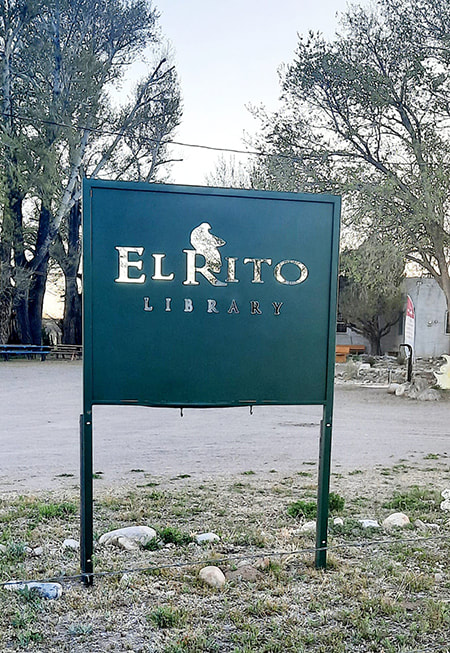
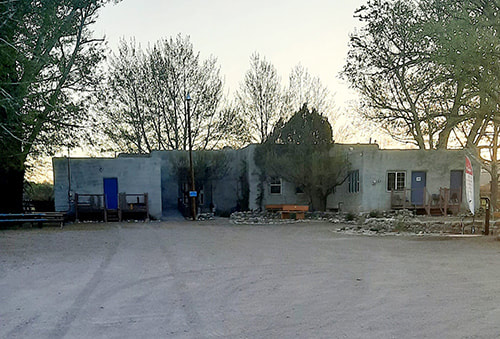
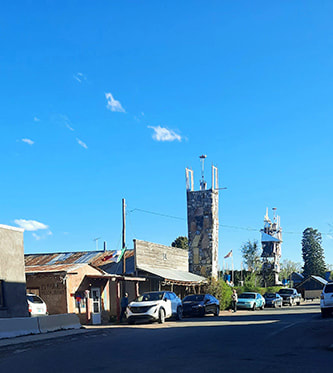




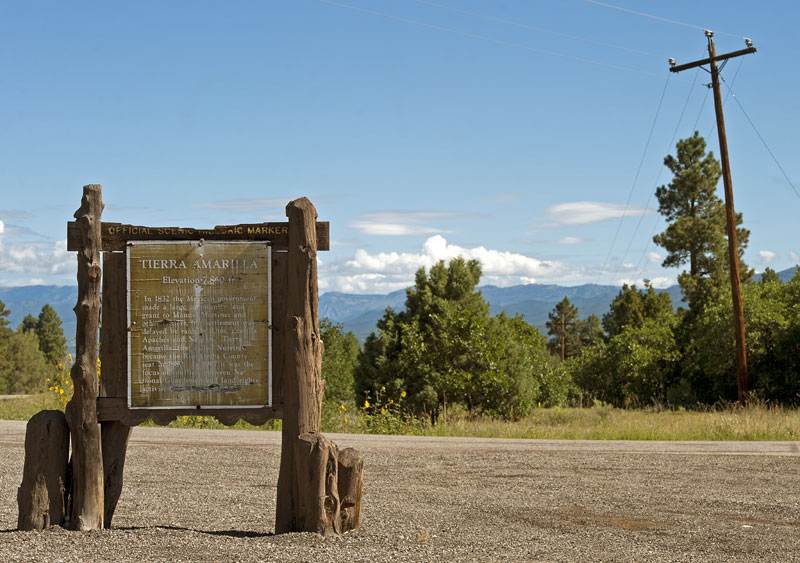
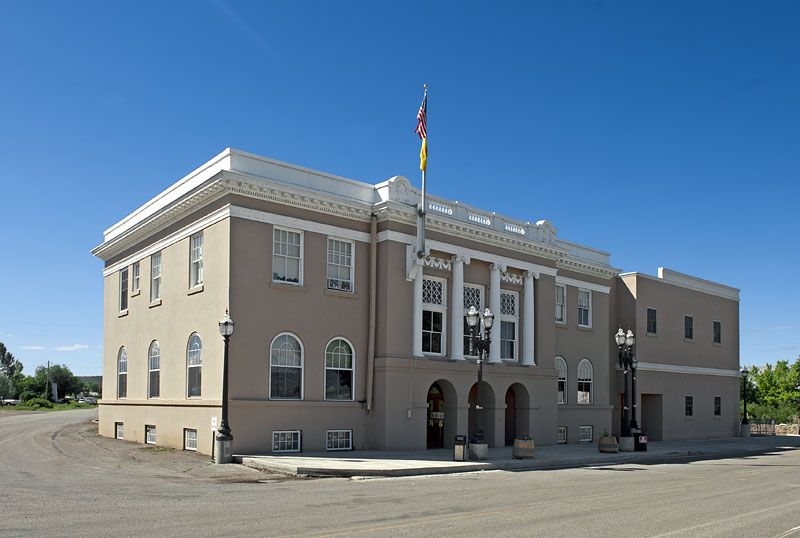

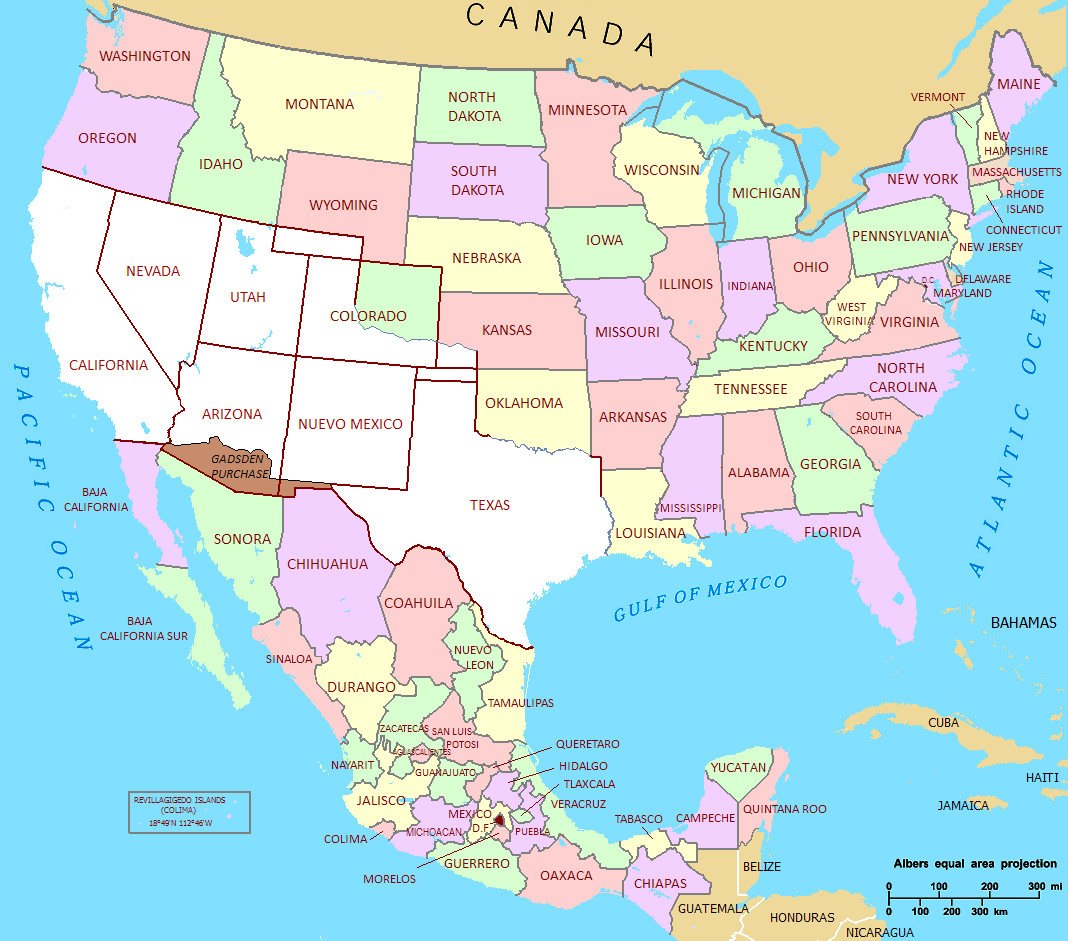




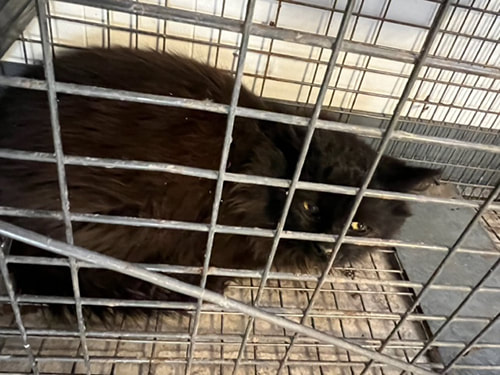
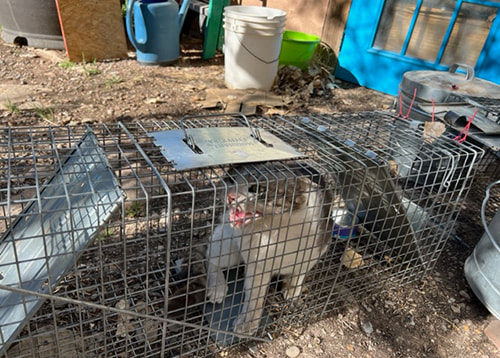

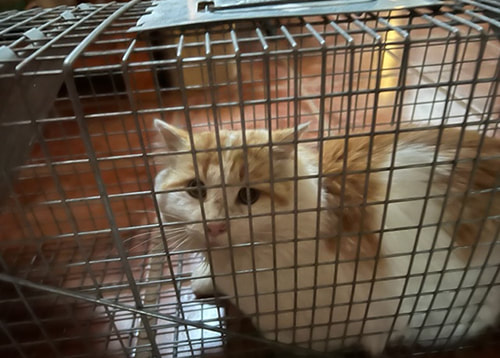
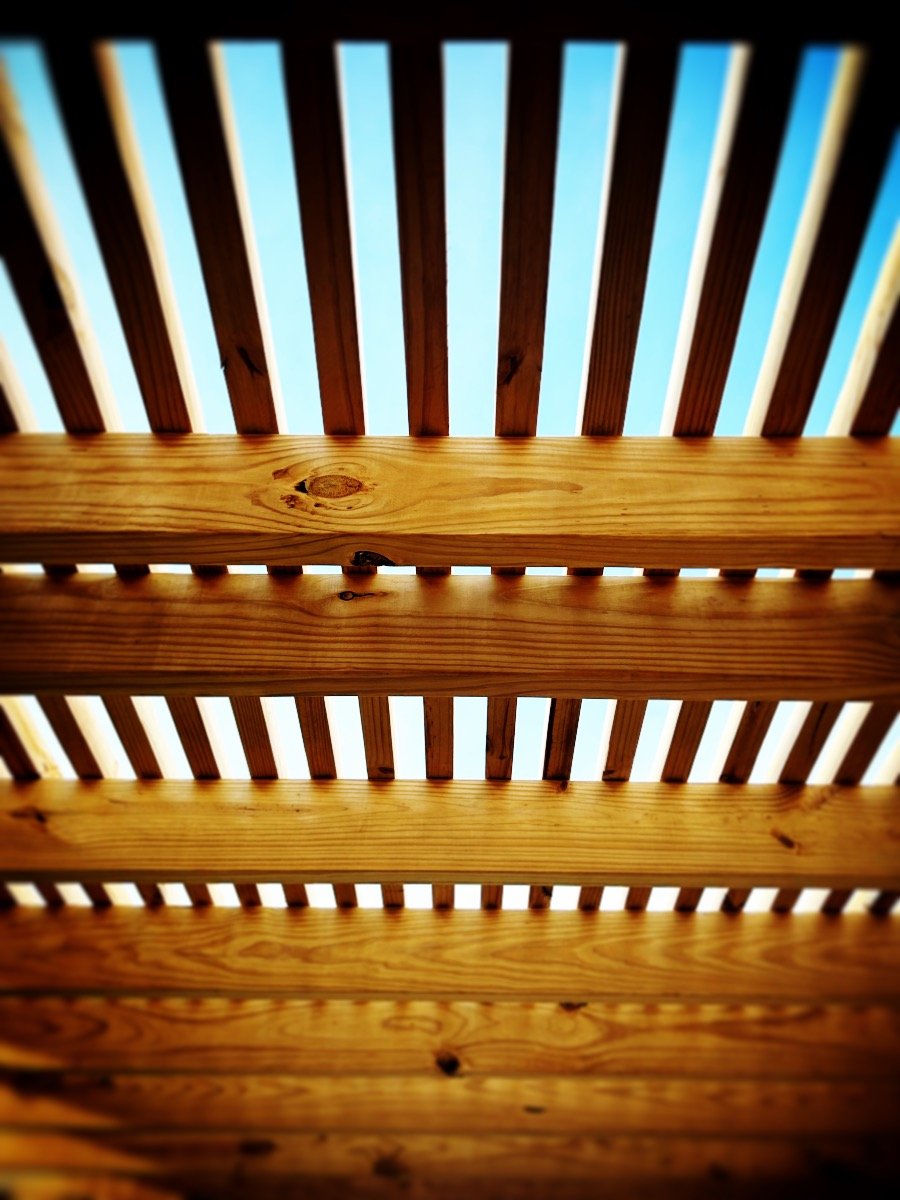
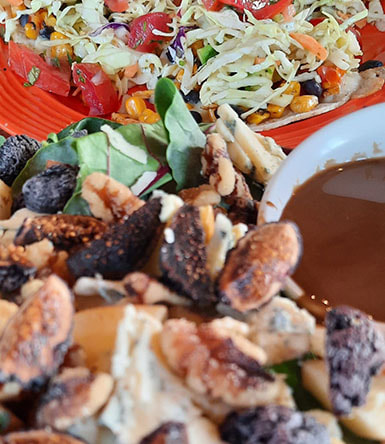
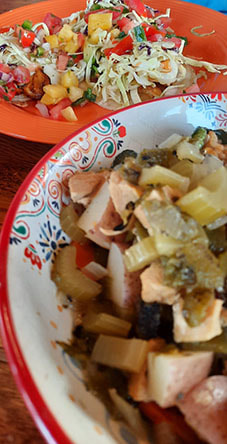

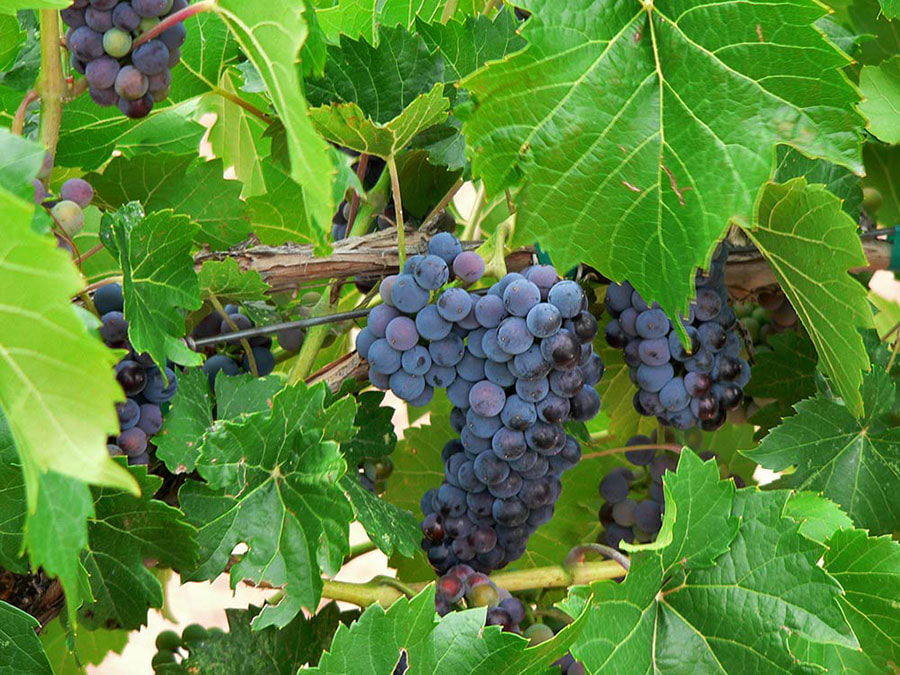

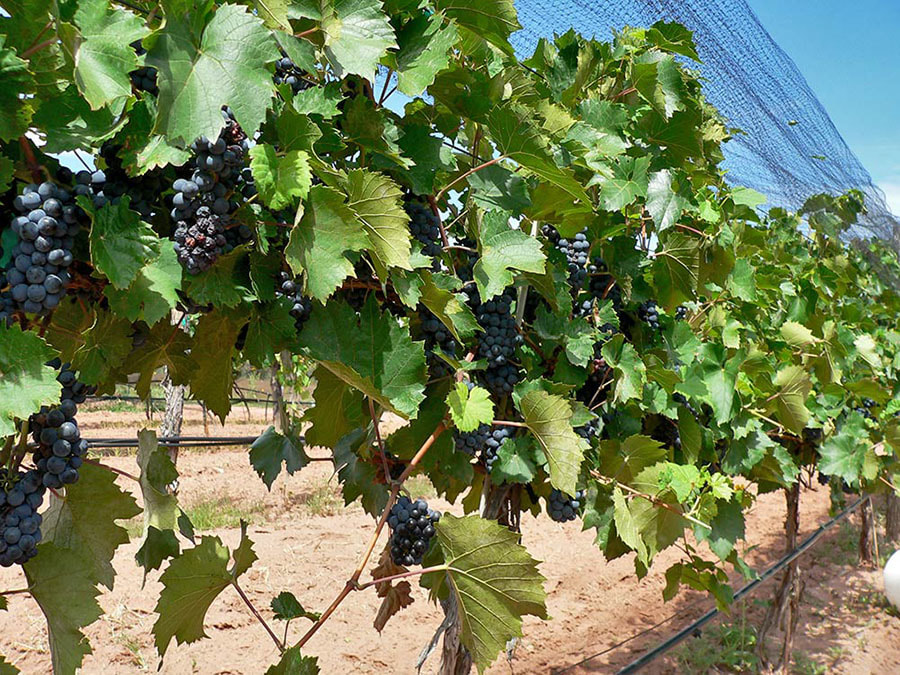
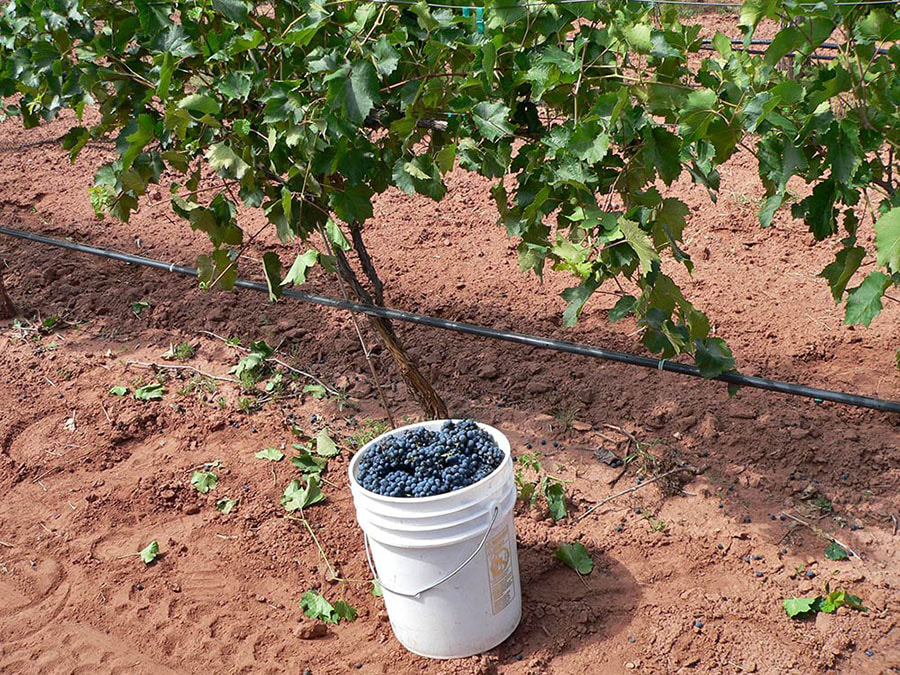
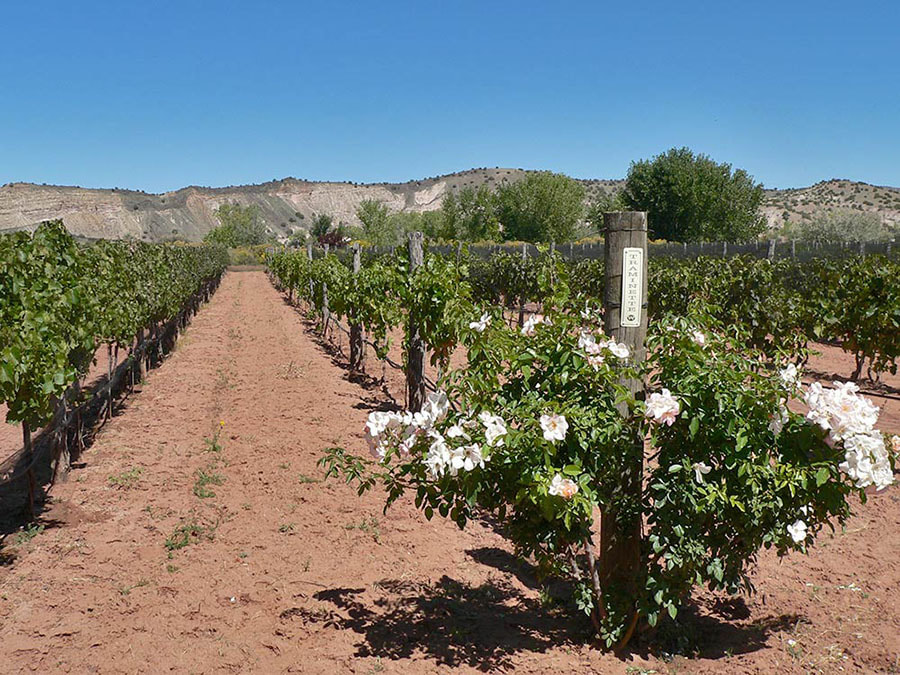
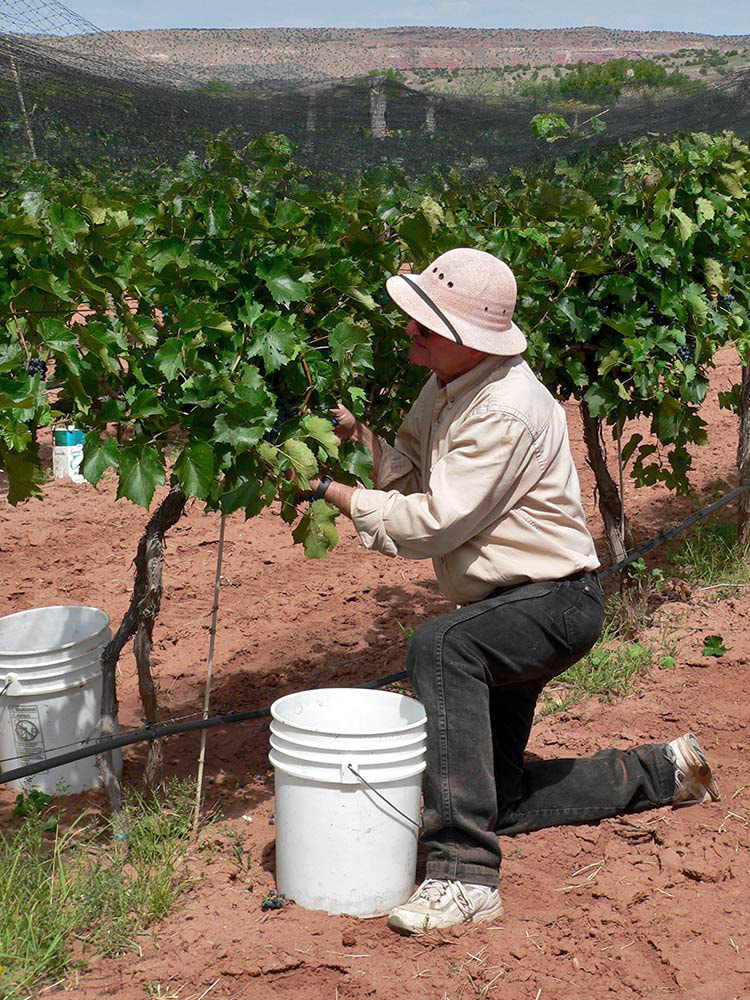


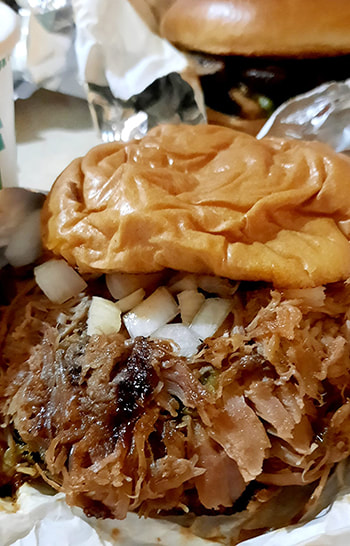

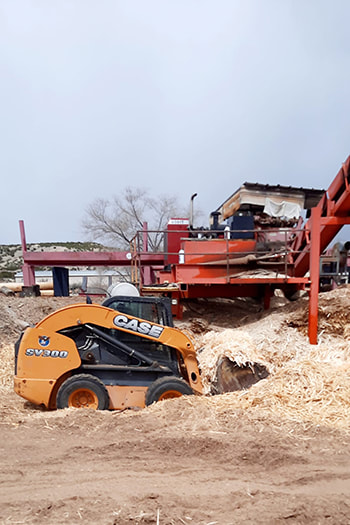
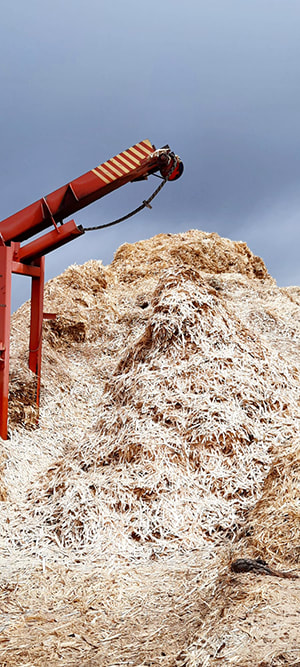

 RSS Feed
RSS Feed